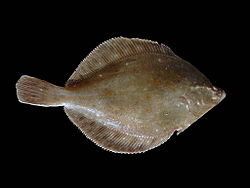| Pleuronectes Temporal range: | |
|---|---|
 | |
| European plaice (P. platessa) | |
| Scientific classification | |
| Kingdom: | Animalia |
| Phylum: | Chordata |
| Class: | Actinopterygii |
| Order: | Carangiformes |
| Suborder: | Pleuronectoidei |
| Family: | Pleuronectidae |
| Subfamily: | Pleuronectinae |
| Genus: | Pleuronectes Linnaeus, 1758 |
| Type species | |
| Pleuronectes platessa | |
| Synonyms | |
Pleuronectes is a genus of righteye flounders found in the northern oceans.